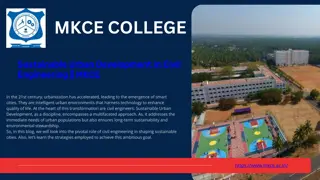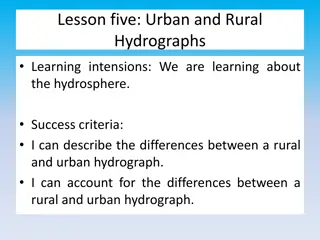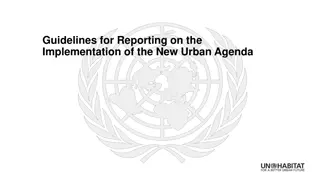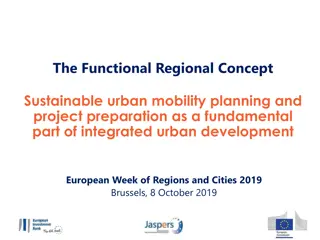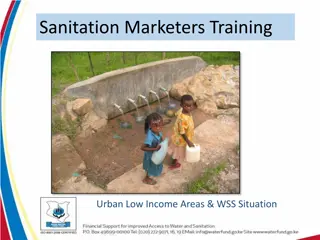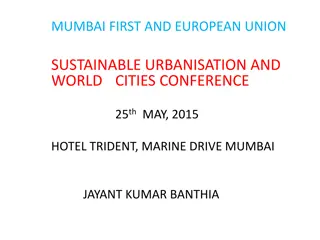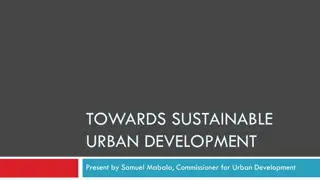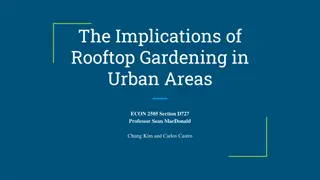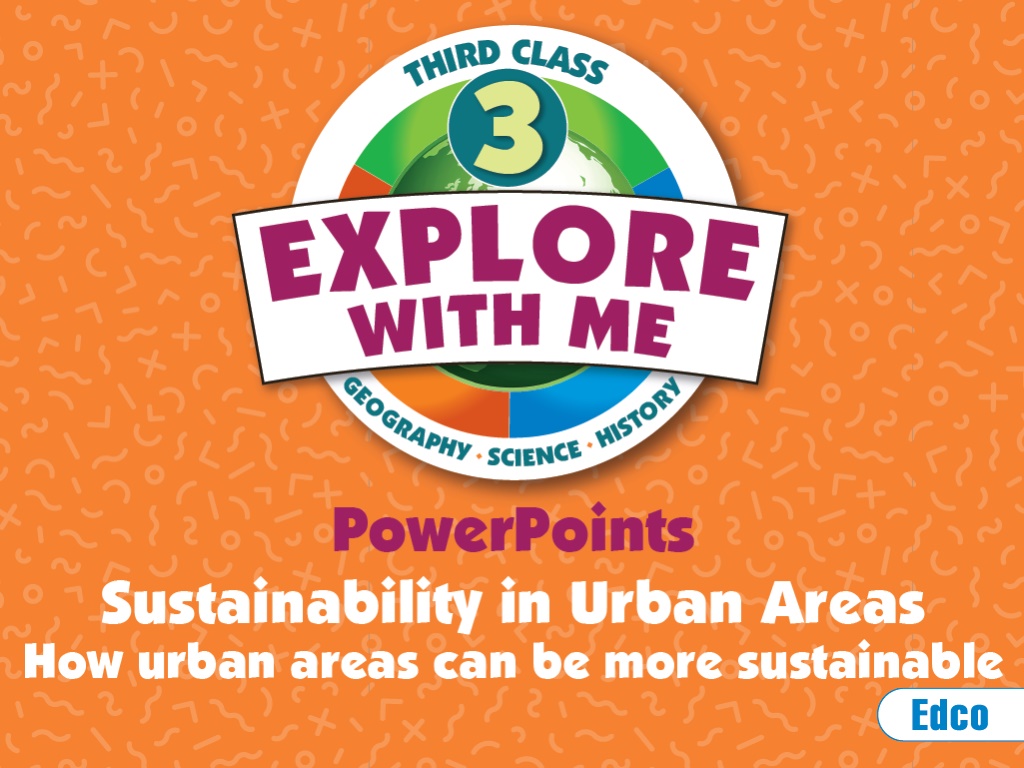
Sustainable Practices in Urban Areas: Building Smart Cities
Urban areas are hubs of activity where sustainable practices can help reduce environmental impact. Smart cities with sustainable buildings and renewable energy sources like solar power are key solutions. By implementing features such as solar panels, rainwater harvesting, and energy-efficient designs, urban areas can promote a greener future for generations to come.
Download Presentation

Please find below an Image/Link to download the presentation.
The content on the website is provided AS IS for your information and personal use only. It may not be sold, licensed, or shared on other websites without obtaining consent from the author. Download presentation by click this link. If you encounter any issues during the download, it is possible that the publisher has removed the file from their server.
E N D
Presentation Transcript
Urban areas Large towns and cities are urban areas, where many people live and work. Much activity goes on in urban areas, including shopping, recreation and transport.
Urban areas We see many workplaces, homes and vehicles in urban areas. A lot of energy and resources are consumed here, and this has an impact on the environment.
Smart cities One way to reduce the impact on the environment is to design smart cities with sustainable buildings. Sustainable buildings are built using sustainable ideas, materials and technologies.
Energy The burning of fossil fuels for energy can cause air pollution. Engineers have developed sustainable ways of producing energy, such as solar power. Solar panels are installed on the roof of a building. They absorb energy from sunlight and it is converted into electricity. This is a safe, efficient form of renewable energy.
Solar panels Nowadays, many new houses are built with solar panels on the roof. Solar panels can also be installed on the roof of an older house. This makes the house more energy efficient and is good for the environment.
Sustainable buildings Sustainable buildings make great use of glass. Large panes of a special type of glass can be fitted on the outside of a building to absorb sunlight in winter and repel it in summer.
Sustainable buildings This helps to maintain a comfortable temperature inside the building. It reduces the amount of energy needed to heat or cool the building.
Sustainable buildings Collecting rainwater is good for the environment because it cuts down on the consumption of tap water. Some sustainable buildings have containers on the roof to collect rainwater.
Sustainable buildings The rainwater that is collected can be used for flushing toilets in the building. Households can install a water butt in the garden and collect rainwater for watering plants or washing the driveway.
Sustainable buildings Sustainable buildings need to be well insulated because this makes them more energy-efficient. Materials such as wool, old clothing or cellulose made from recycled newspaper can be used as insulation. This is a great way to reuse unwanted items.
Sustainable cities Sustainable cities should include green spaces, such as public parks. A green space can be a place for people living or working in the city to go and relax. They can take a break from the busy city streets while they walk or sit in the park. Trees and vegetation also provide clean, fresh air and reduce air pollution caused by the burning of fossil fuels.
Green spaces Green spaces can even be found on rooftops in some urban areas, like this one in Rotterdam, the Netherlands. This is a very clever idea in a built-up city.
Cycling Nowadays, we see cycle lanes in more and more cities. Cycle lanes encourage people to cycle a bicycle in the city instead of driving a car. Through the use of cycle lanes, Amsterdam has improved its air quality, making it a good example of a sustainable city.
Sustainable future Many changes have been made in cities to make them more sustainable. Engineers work at solving problems and they are always looking for ways to make cities even more sustainable in the future.
Engineers Engineers must think very carefully about which materials will make a building more energy-efficient. They also think of other ways to make the building more sustainable.
Engineers Engineers use the engineering design process . This process helps them to come up with new ideas and solutions to problems. They can then test their ideas to see if they work.
Ume We see examples of sustainability in towns and cities around the world, including the city of Ume in Sweden. Only energy-efficient buildings are allowed to be built in Ume . Older buildings in the city are being upgraded to become more energy-efficient. When people work together, great things can be achieved!
Illustrations Shutterstock Beehive



